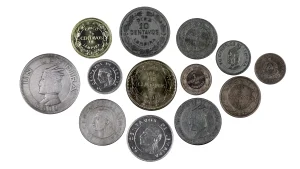Epoch of the Conquest in Honduras
The territory comprising the Republic of Honduras, one of the five states in Central America, was discovered by Christopher Columbus during his fourth and final voyage to the New World (1502). It was on this date that he took possession of this country in the name of the King of Spain.
In March 1524, Gil González Dávila became the first Spaniard to arrive in Honduras with the purpose of conquest. He founded the town of San Gil de Buena Vista and ventured into Honduran territory, pacifying the indigenous people and fighting against the Spaniards who contested the territory, as well as hoping to find the outlet of Lake Nicaragua.
Later, Hernán Cortés, motivated by the reports he had received about the great wealth of the country, sent two expeditions—one by land and the other by sea. He entrusted the former to Pedro de Alvarado and the latter to Cristóbal de Olid. However, the latter betrayed him. For this reason, Cortés left Mexico at the head of an expedition that lasted nearly two years and ended, after countless dangers and hardships, in Trujillo.
Upon arriving in Honduras, Cortés introduced livestock and founded the city of Natividad de Nuestra Señora near Puerto Caballos. On April 25, 1526, before returning to Mexico, Cortés appointed Hernando de Saavedra as the governor of Honduras and instructed him to treat the indigenous people well.
On October 26, 1526, Diego López de Salcedo was appointed by the emperor as the governor of Honduras, replacing Saavedra. The following decade was marked by the personal ambitions of rulers and conquerors, which interfered with the government’s organization. Spanish settlers rebelled against their leaders, and the indigenous people rebelled against their masters and the mistreatment they endured.
In his quest for enrichment, Salcedo had serious confrontations with Pedrarias, the governor of Castilla del Oro, who desired to have Honduras as part of his dominions. In 1528, Pedrarias arrested Salcedo and forced him to cede part of the Honduran territory, but the emperor rejected the agreement.
After Salcedo’s death in 1530, the settlers became the arbiters of power. They appointed and removed governors. Faced with this situation, the settlers requested Pedro de Alvarado to put an end to the anarchy. With Alvarado’s arrival in 1536, chaos decreased, and the region came under authority.
In 1537, Francisco de Montejo was appointed governor. Upon his arrival in Honduras, he invalidated the land distributions made by Alvarado. His captain, Alonso de Cáceres, was responsible for suppressing the Indian revolt of 1537 and 1538, led by the chief Lempira.
In 1539, Montejo and Alvarado had serious disagreements about the region, which caught the attention of the Council of the Indies. Montejo went to Chiapas, and Alvarado became the governor of Honduras.



